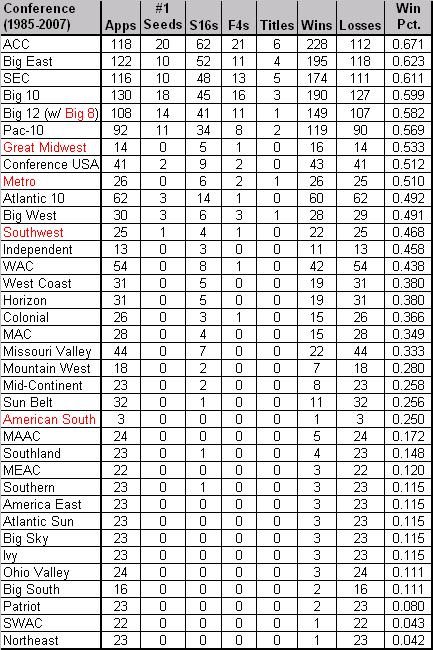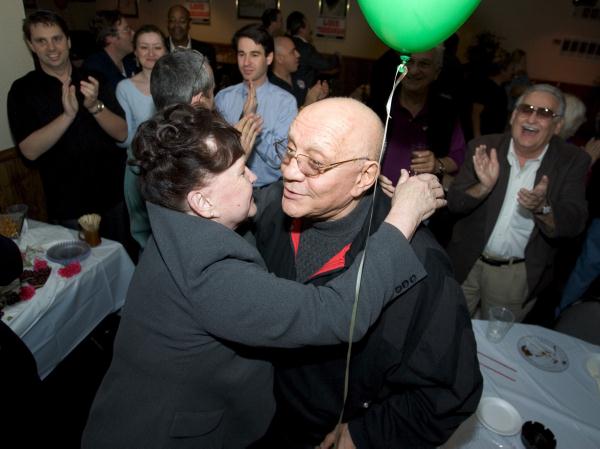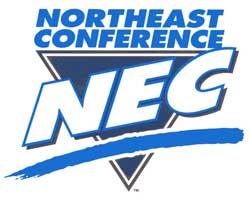Conference Primers: #21 – Patriot
Posted by rtmsf on October 23rd, 2007
Predicted Order of Finish:
- Holy Cross (19-7) (11-3)
- Bucknell (19-8) (10-4)
- Lehigh (17-12) (8-6)
- American (13-16) (7-7)
- Colgate (12-15) (7-7)
- Army (12-16) (6-8)
- Navy (9-19) (4-10)
- Lafayette (6-23) (3-11)

WYN2K. The story of the Patriot League this season, like many other low-major leagues, is that the big dogs are suddenly vulnerable. Holy Cross and Bucknell have combined for six of the last seven Patriot League championships, but with a mass of graduations and injuries between the two, the gap between themselves and the rest of the league is closing. The question is whether the gap in talent returning has closed enough to where we can make a good faith argument that another team will win the Patriot this year. Sadly, we can’t.
Predicted Champion. Holy Cross (#14 seed NCAA). Ralph Willard’s team lost its entire starting backcourt of conference POY Keith Simmons and DPOY Torey Thomas, but guards at the low major level are easier to replace than bigs, and former 2005 ROY Pat Doherty should smoothly take over the reins of the Crusaders (if he can stay healthy). Six other players return from a 13-1 team, but the most intriguing is 6’11 center Tim Clifford. Schools at this level simply do not have the luxury of skilled size, yet Clifford (#42 block% nationally) has shown that he can anchor the post for one of the nation’s most efficient defenses (#5 in defEff and #1 in stl% nationally). The Crusaders have gone 44-1 over the last three seasons in the Patriot League against ABB (anyone but Bucknell), so there is also a psychological advantage here that shouldn’t be understated.
Others Considered. As much as we really enjoy watching Bucknell play in the NCAAs, we fear that their personnel losses are simply too much to justify picking the Bison to win the league this year. Bucknell was already losing three main cogs from its 2005/2006 NCAA squads (Chris McNaughton, Donald Brown & Abe Badmus) before it got news that incumbent forward Darren Mastropaolo tore his ACL over the summer and will likely miss this season as well (all three inside players from the nations #1 offReb% team are now gone). That leaves guard John Griffin as the team’s sole returning starter with a group of talented reserves ready to step up. While we expect Bucknell to take a bit of a step back this year, we really don’t see another team in the Patriot ready to vault into the Bison’s position as a member of the Big Two. If we have to choose one, Lehigh is probably the most viable candidate. The Mountain Hawks return several starters from a 7-7 squad, but their coach Billy Taylor jumped to Ball St. in the wake of the Ronny Thompson fiasco. One knock against this team is that, in a league filled with three-point shooters, Lehigh defends against the three like a sieve (in other words, teams shot 39.2% from three against them last year – #318 nationally). Another team we considered is Colgate, who returns most of its minutes except for leading scorer Jon Simon, but they have a tendency to underachieve (20 wins in two years) and we don’t expect that to change substantially this season.
Games to Watch. Bucknell and Holy Cross are must-watches for this league. They will probably meet three times again this season.
- Bucknell @ Holy Cross (01.19.08) & Holy Cross @ Bucknell (02.16.08)
- Patriot League Championship Game (03.14.08) ESPN2
RPI Booster Games. This is the first league we’ve analyzed this year that pulled a complete oh-fer against BCS opponents last season (0-23). Bucknell came closest to pulling out wins, losing in OT to both Wake Forest and Penn St. (the Bison did beat Xavier 68-67). Nevertheless, this is probably a simple anomaly because this league is good enough to get a few wins against BCS teams most years. Out of only fifteen scheduled this year, here are the best opportunities.
- Army @ Minnesota (11.10.07)
- Bucknell @ Villanova (11.18.07)
- Seton Hall @ Navy (11.23.07)
- Bucknell @ Wake Forest (12.16.07)
- Colgate @ Syracuse (12.18.07)
- Lehigh @ Penn St. (12.31.07)
- Holy Cross @ Maryland (01.08.08)
Odds of Multiple NCAA Bids. None this year, but if Bucknell and Holy Cross continue to grow their programs, there could be a foreseeable future where both of these teams would have good enough overall resumes to get an NCAA bid.
Neat-o Stat. Just how dominant have Bucknell and Holy Cross been in this league over the past three years? Try 80-4 on for size, with a perfect 28-0 record in 2007 against the other six conference members. Is it any wonder that the other six coaches are cautiously optimistic about their chances this season? Of course, in order to have a chance to win this league, the bottomfeeder group of Army, Colgate, Navy and Lafayette are going to have to do better than finishing in the bottom fifty teams nationally in offensive efficiency (cf. with Bucknell – 140th; Holy Cross – 189th).
64/65-Team Era. The Patriot actually has one of the worst conference histories of this era (2-16, .111), ranking only ahead of the SWAC (.043) and the Northeast (.042) conferences in terms of NCAA Tourney success (and tied with the OVC and Big South). Part of this is due to its seeding, which has averaged #14.9 over the years. Still, in the last five years with the ascendance of Bucknell and Holy Cross, the league has earned an average seed of #13.2, which, not coincidentally, is the period of the most success of the league. The two wins were both orchestrated by Bucknell in magnificent upsets, the 2005 victory over #3 Kansas 64-63 still resonating in the nation’s heartland (in the form of firebillself.com… joking… joking… these are simple jokes we tell…). Enjoy.
Final Thought. As we’ve gone through the low majors we’ve been a little surprised by just how many dominant programs have risen to the top of these leagues. It’s gotten to the point in several conferences where if you don’t see a particular name such as Belmont (Atlantic Sun), Penn/Princeton (Ivy), Winthrop (Big South), Davidson (Southern), or Holy Cross/Bucknell, etc., then something went seriously wrong. By pure coincidence, Holy Cross and Bucknell are the two Patriot League schools that spent the most money on its hoops programs in 2006 (h/t to Mid-Majority).














































